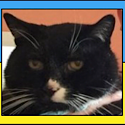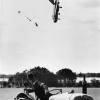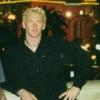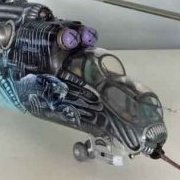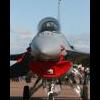Search the Community
Showing results for tags 'Albatross'.
-
SOVA-M is to release a 1/72nd Grumman SA-16A Albatross kit - ref. SVM-72024 (14 plastic frames+PE sheet+decals for 1 livery: Global Wildlife PP-ZAT) Sources: https://www.modelsvit-eshop.com/c/aviation-1/sa-16a-albatross-flying-boat-155 https://www.aviationmegastore.com/grumman-sa16a-albatross---expected-november-2020-svm-72024-sova-models-svm-72024-aircraft-scale-modelling/product/?action=prodinfo&art=173170 https://www.hannants.co.uk/product/SVM-72024 V.P.
-
Rummaging through my attic and found a very old MAP set of Albatros plans, with nothing better to do I went through the whole pack, all the B,C and D series, of all of them I liked the look of the C IX it’s essentially a two seat D series with ( for the time) a very unconventional wing arrangement. The plans. Not having access to a photocopier any more and with time in my hands I decided to draw up some 1/48 sketches my hand, these will be my working drawings.
- 87 replies
-
- 9
-

-
- scratchbuild
- 1/48
-
(and 1 more)
Tagged with:
-
Valom is to release in January-February March 2018 1/72nd de Havilland DH.91 Albatross kits - ref. 72128 & 72129 Source: https://www.facebook.com/www.valom.net/posts/722404797959265 V.P.
- 97 replies
-
- 10
-

-
This is my second completed kit of the year, the Albatross D.II by Eduard. I have built quite a few of their WWI kits and I have to say I this they are great. This was my first attempt at a wood grain finish on the fuselage and I think it came out nicely. I added Eduard seatbelts and used Uschi's high stretch elastic rigging thread. If not for this thread I think I would have thrown in the towel on building WWI aircraft long ago. Also, I used Gas Patch anchors for the rigging but I am not happy with the results but it was my own fault - I should have thought out the order of attaching them as they went in too early in the process and it is difficult to open those holes up again. I don't normally weather my WWI aircraft, no particular reason except I like the bright colors so I just leave them as they are.
-
Scratchaeronautics is working on a 1/72nd Grumman UH-16B ASW Albatross resin kit. Source: http://www.ebay.co.uk/itm/GRUMMAN-ALBATROSS-ASW-RESINA-1-72-/252982252515?hash=item3ae6ead3e3:g:hYwAAOSwXetZOnXy Box art V.P.
- 5 replies
-
- Scratchaeronautics
- UH-16
-
(and 1 more)
Tagged with:
-
Hi all and here's my first finish of 2018, built for the Flying Boats GB here. This is Revell's 1989 boxing of Monogram's 1957 issue Grumman Hu-16 Albatross finished in US Coastguard markings for S/N 7240. According to the Coastguard Aviation Association, S/n 7240 began it's career on 25th August 1961 based out of San Diego before moving to a number of different bases. She was detatched to NAS Quonset Point for 4 months in 1967 and would have worn the scheme of that time with a hi-vis orange nose. (I went for the later scheme she wore) After 2 years in storage at Davis Monthan in the early 70's, she was overhauled and re-entered service at Cape Cod in July 1972 and then Miami and San Francisco among others. Her last flight was 10th August 1982 out of Cape Cod. The build thread is here but to recap: Kit: Revell 4280 Paints: White from Halfords spray can. All other colours Revell Acrylic, brush painted. Klear, Flory Models Wash, pastels. Decals: PrintScale Grumman Albatross 72-136 Extras: All rivets sanded off, panel lines rescribed. Basic interior added to cockpit. 20g weight in the nose. If you look beyond the simple details like the engines and overscale landing gear, the millions of rivets and lack of any detail on the inside, she's actually quite a nice simple build. My efforts at rescribing were ok and I'm really happy how she turned out in that iconic USCG scheme. Definitely one of those aircraft that's in need of a 1/72 re-tool. Revell_1_72_USCG_Grumman_Albatross (2) by Dermot Moriarty, on Flickr Revell_1_72_USCG_Grumman_Albatross (1) by Dermot Moriarty, on Flickr Revell_1_72_USCG_Grumman_Albatross (3) by Dermot Moriarty, on Flickr Revell_1_72_USCG_Grumman_Albatross (5) by Dermot Moriarty, on Flickr Revell_1_72_USCG_Grumman_Albatross (6) by Dermot Moriarty, on Flickr Revell_1_72_USCG_Grumman_Albatross (7) by Dermot Moriarty, on Flickr Revell_1_72_USCG_Grumman_Albatross (8) by Dermot Moriarty, on Flickr And with my Hobby Boss Jayhawk. Revell_1_72_USCG_Grumman_Albatross (9) by Dermot Moriarty, on Flickr Thanks for looking and enjoy your modelling! Cheers, Dermot
- 21 replies
-
- 48
-

-

-
- Revell
- Coastguard
-
(and 1 more)
Tagged with:
-
Hi all and here's my one, Revell's gloriously rivetting Grumman Albatross. I got this many years ago from one of the 2nd hand trade stands at Telford. Markings will be for a US Coastguard version Good luck with your builds! Cheers, Dermot
-
Aircraft in Miniature is to release in late 2016 a 1/72nd de Havilland DH.91 Albatross resin kit - ref.? Source: http://www.aim72.co.uk/page6.html V.P.
- 25 replies
-
- 2
-

-
Hello! This is the Amodel Albatross which I finished this week. The triphibian was equipped with skis so It could land on snow more than six inches deep, in case you were curious. All brush painted with humbrol mainly, some Vallejo along the way. I have an airbrush now and just learning on it - would have made quite a lot of this a bit easier I suspect! For various reasons I spent a good deal of time detailing the interior, although predictably little of it can be seen even with the door posed open! It's a great little kit and surprisingly small, even for this scale. Quite a bit of sanding and rescribing to get it done but one of the more satisfying builds of the last year. Looks the part, I reckon. Bit of a rough finish in areas but I'm happy with it. Thanks for looking!
-
My third foray back into model planes continues with WW1 fighters after my Revell 1:72 Sopwith Camel and Fokker D VII (posted on RFI) I have to say that the colours of these aircraft are really striking and make me want to build many more. Here is my Albatross D III as flown by Werner Voss, Jasta 2 Boelcke, Juni 1917. Hope you enjoy the pictures. :-)
-
This is the Eduard 1/72 L39 Albatros from the 'around the world' two-kit boxing. Instead of kit decals, I have used a set by Kopro to make this specially marked Hungarian Air Force example from 2008 called 'Capeti II'. The decals are very thin and rather difficult to manage, and the kit - though it looks great in the box - is surprisingly poor in terms of fit. In the end though, it looks like an L39; so anyway here it is.
-
Hello, I just finished the Trumpeter 1/48 Italian Air Force Grumman Hu-16 Albatross . I like this plane so I added a lot of features like engines, sound and lights. I had a lot to rework because nothing was "italian", but just a base version with italian decals (wrong and lacking). I had to add or modify a lot of antennas and other details and add or build lacking decals. I hope you like it. Find a movie here https://www.flickr.com/photos/angelomoneta/24955771903/in/photostream/ and more pictures here https://www.flickr.com/photos/angelomoneta/with/24955771903/ Angelo
- 15 replies
-
- 25
-

-
Hi all,with not a lot going on after the two Thunderbolt,s are finished I fancied a change of era so inspired and jealous by my eldest getting a box full of unbuilt WW1 biplanes from his wifes Grandad(OK he did give me Matchbox's Siskin) I got these two from King Kit at a fiver the Pair,I like to buy older boxing as the molds tend to be better(these two are still current releases).The obvious risk are the decals which due to the kits being fully sealed are in tip top condition so I am building the all red Albatross of Manfred von Richthoven and Goering's all white Fokker.Here's the box and sprue shot's.
-
Following in the long modelling tradition of never finishing one build before starting another. My son Dylan and I are finally getting our collective finger out and joining this GB, without having completed our previous builds ! We shall be trying to form the resemblance of an Albatross from the misformed, salmon pink shaped blobs provided by Glencoe models. The aircraft itself was Austria- Hungary's own version and the was good enough not to need updating as the German one did for later marks. We have been given permission to both build one of these each but for different WW1 Austria-Hungarian aces, Photos to follow. Cheers Pat & Dylan
-
Grumman HU-16A Albatross Trumpeter 1:48 History The Grumman HU-16 Albatross is a large twin-radial engine amphibious flying boat that was used by the U.S. Air Force, the U.S. Navy and the U.S. Coast Guard, primarily as a search and rescue and combat search and rescue aircraft. Inspired by the performance of the Grumman Goose during WWII, the U.S. Navy solicited Grumman to design a significantly larger amphibian with longer range. In 1944, Grumman submitted and won approval of its design G-64, to be named "Albatross," with accommodation for a crew of four, and a cabin capacity of 10 passengers, stretchers, or 5,000 pounds of cargo, as circumstances dictated. In addition, there were pylons under the wing and outboard of the engines which made it possible to carry weapons or drop tanks for increased range. In addition, fuel could be carried in the fixed underwing floats. Originally designated as the SA-16 for the USAF and the JR2F-1 and UF-1 for the USN and USCG, it was redesignated as the HU-16 in 1962. The majority of Albatrosses were used by the U.S. Air Force, primarily by the former Air Rescue Service, and initially designated as SA-16. The USAF used the SA-16 extensively in Korea for combat rescue, where it gained a reputation as a rugged and seaworthy craft. Later, the redesignated HU-16B (long-wing variant) Albatross was used by the U.S. Air Force's Aerospace Rescue and Recovery Service and saw extensive combat service during the Vietnam War. In addition a small number of Air National Guard air commando groups were equipped with HU-16s for covert infiltration and extraction of Special Forces from 1956 to 1971. Other examples of the HU-16 made their way into Air Force Reserve air rescue units prior to its retirement from USAF service. The Model Trumpeters somewhat congested release schedule has produced some real corkers as well as some rather underwhelming kits. The subject matter can sometimes be something modellers have been waiting a long time to see, and the Grumman Albatross in 1:48 is just such a subject. Inside the quite large box with some colourful artwork of an aircraft in USAF rescue colours overflying a foundering ship, (which has been the subject of some debate), there are seventeen sprues of medium grey styrene, one sprue of clear styrene, a sheet of etched brass, rubber tyres and optional metal undercarriage parts. All the parts appear to be very well moulded, with no sign of flash and only a moderate number of moulding pips. Detail seems pretty good throughout, including a nice cabin interior. Although there is still plenty that the modeller could add should they so wish. Small items such as cabling and pipework in the gear bays can be added and bigger jobs such as the frames, stringers and wing box sections within the cabin. If you are going to detail the cabin then it should be pointed out that there are quite a few ejector pin marks that will need to be filled first. External details such as the panel lines and rivets are nicely restrained and the styrene seems to be slightly matt with a fine, but definite texture to it. The clear parts are nice and thin but there seems to be some inconsistency in that some of the side windows are very clear and flat whilst others do have some distortion from the edges to the centre. This is also true of the main cockpit canopy, where the outer windscreen panels have slight distortion when viewed at certain angles. Maybe, when dipped in Aqua Gloss or Klear it won’t be so noticeable. The most obvious aspect of the construction is the separate nose section of the fuselage, which may be a clue to further versions being released. Construction begins with the assembly of the nose undercarriage and bay. The nose wheels are made up of two hub parts sandwiching the rubber tyre. The wheels are then mounted onto the metal axle part which is then fitted to the main oleo, (either the styrene or metal parts), with the scissor link attached to the rear, joining the oleo and axle together. The retraction actuator jack is then attached and the undercarriage fitted between the bay sidewalls, which have had additional detail parts added beforehand. The front and rear bulkheads are then attached followed by the bay roof, with a strengthening beam attached. Moving on to the interior, work begins with attaching the various black boxes, (radios and radar etc), to the cockpit/cabin bulkhead. This is followed by the assembly of the instrument panel. The Cockpit is made up of two separate floors onto which the pilot and co-pilots seats are fitted. Each seat consists of two outer frames, seat squab and back rest, two armrests, and the headrest. There is a third seat fitted behind the co-pilots position, this one is made up from front and rear frames, seat squab and back rest, crossed under seat bracing and the rotating base. Behind the pilots seat there are a couple of other black boxes attached. The two steering yokes are assembled to their respective control columns and fitted to the pilot and co-pilots positions. The next assemblies are the main wheel bays. Each main part is fitted out with the top box, into which the separate pipes and cables are attached. At the bottom of each bay four triangular ribs are glues into place, followed by the single sidewall and internal access hatch. With the starboard bay fitted with additional radio gear where it intrudes into the main cabin the two bays are attached to the centre bulkhead which is then slotted into position on the cabin floor. With the bays in position then the cockpit, cockpit/cabin bulkhead, radar operators chair, attendants chair can all be fitted to their respective positions on the cabin floor. The three bunks on the starboard side are made up of the two end frames and the bunk frames, onto which the etched parts that make up the “canvas” are folded around. The nosewheel bay is glued into position, as is the cockpit front bulkhead and instrument panel. With all the internal sub assemblies in place the cabin roof can be fitted. With the internals now complete it’s time to fit the clear windows into both halves of the fuselage. It is at this point that any further detailing, such as adding the frames and stringers can be carried out. The internal assembly is then fitted to slots in both the rear fuselage and also the separate nose section which has further attachment points around the main gear bays, giving the required strength. The fuselage/nose can now be closed up, having had an indicated 50g of nose weight installed. When the fuselage has been glued securely then the radome can be added and the canopy assembly, which has had the upper console fitted internally and the escape hatches, aerial and DF aerial fitted externally, can also be fitted. To the rear the horizontal tailplanes, elevators and rudder are all assembled and attached to the tail. Details such as the rudder trim tab, tail lights, aerials and intake scoops are also fitted. The main cabin door is fitted with its handle and can be posed open or closed. Several more sub-assemblies are then constructed, including the main undercarriage bays for the wing, the two engines, which are nicely detailed out of the box with the two part cylinder bank attached to the bulkhead and onto which the push rods, crank case and magnetos are attached. The engines are then inserted into the cowlings and the propellers assembled and fitted to the prop shafts. Two drop tanks are then assembled, complete with pylons, sway braces and fuel pipe, after which the two wing floats are also constructed out of a three part main float, two end pieces and a two piece pylon. The centre wing is assembled out of a single piece upper part and two lower parts. Both the upper and lower parts are fitted with the engine nacelle sections, whilst the upper section has two upper hatches fitted and once the gear bays are fitted to the lower sections they can be attached to the upper part. The outer wing panels are also made up of top and bottom parts which, when joined are fitted out with the two part flaps and ailerons. The two landing lights, one per wing, can be posed extended or retracted and outside of these two pitot probes are fitted per wing. The wing floats and drop tanks can also be attached at this point and the whole assembly attached to the fuselage. The completed engine sub-assemblies are then attached to their respective nacelles with the addition of the two lower cowl flaps. Lastly the complex main undercarriage is assembled, again with styrene or metal main oleos, numerous struts, actuators, and bay doors along with the three piece wheels, made in the same way as the nose wheel. The main bay door and the two nose wheel bay doors are the last to be fitted. Etch The small etched sheet provides the three bunk beds, components for the nose and main undercarriage bays, brackets for beneath the starboard side hatch and, most importantly lap and shoulder straps for the pilots and co-pilots seats. The brass is of a decent thickness, but quite pliable and should be fairly easy to bend to shape, even without the need to anneal first. Decals There are two decal sheets include in the kit. One for each option, which are:- • US Air Force HU-16A, 0-10022, as per box art. • Taiwanese Air Force, HU-16A, 1032 The decals are very nicely printed, in good register and of good opacity. They are quite glossy and there appears to be very little carrier film so should settle down well with the use of your favourite setting/softening solutions. A full set of stencils is provided, along with propeller warning stripes and crash crew cut outs. The instrument panels are also provided as decals. The Stars and Bars on the sides of the USAF version already have cut outs to allow them to sit over projections on the main cabin door and starboard side hatch. There has been some comments made on the forums about the lack of walkway decals for the USAF version, but this shouldn’t be too much of a problem masking off and painting at the same time as painting the wingtips and fuselage band. It’ll probably look better anyway. Conclusion This is a superb looking kit and will be quite impressive when built, so keep some space saved for it. Apart from the additional detail that really is needed inside the fuselage, and should have been moulded, the details and moulding all look very nicely done. Having the alternative metal oleos is a nice touch as I imagine this model will be quite heavy, especially with all the nose weight that is required, and the styrene parts may not cope for too long. There have been comments about the nose chine, but having checked pictures and plans it doesn’t appear too far out and certainly not as bad as it looked in the initial CAD drawings that were released. Highly recommended, and I’m looking forward to the later models that should surely be coming. Review sample courtesy of
-
Grumman Albatross correction set AlleyCat 1:48 The release of the 1:48 Grumman Albatross by Trumpeter was a very welcome and pleasant surprise and whilst the majority of the kit was nicely done the nose section and the distinctive chines wasn’t quite correct shape wise. To remedy this, AlleyCat have released this correction set, which consists of a completely new nose section, canopy and overhead console. Packaged in a plain sturdy cardboard box the dark grey resin parts are pretty well protected with poly chips and the clear resin canopy is in a separate zip-lock bag to prevent scratches etc. The written instructions are on one side of the A5 sheet. Because of the way Trumpeter produced the kit with a separate nose section the two resin halves will be easy to fit, with no cutting required at all, just some cleaning up and the opening up of the side windows. Inside of each nose section there is a representation of the soft insulation on the hull floor and around the nose, which is nicely done and with careful painting should look good, if it can be seen once the halves have been closed up. There is quite a bit of flash around the parts and some moulding blocks in quite awkward places on the join line of the fuselage halves, although with a bit of care these shouldn’t prove too much of a problem to the more experienced modeller. The overhead panel just needs the casting block removed from the rear before being fitted to the inside of the canopy. The clear resin canopy is well moulded, but again with a fair bit of flash and a large moulding block at the rear. The removal of which has been helped by the join line being thinned out so that a sharp scalpel blade is all you need. The resin itself isn’t the clearest around, but with some gentle polishing and some Aqua Gloss it should come up well. A nice touch is the inclusion of a sheet of paint masks for the canopy, side windows and port holes. Conclusion The release of this set is great news for those who were disappointed with the kits nose section. The ease at which this conversion can be used is also a great help thanks mainly to the design of the host kit. I can recommend this set to all modellers conversant with the use of resin and the different adhesives required. Review sample courtesy of
-
Last September during my trip to Arizona, I stumbled upon Marsh Aviation who re-built Trackers as Turbo Trackers for various air forces and navies around the world, not to mention the US Forest Service. Being of the opinion that the worst they could say was no, I knocked on the office door and asked if I could take a look around. They said yes and left me to wander around the yard at my own pace, although they did give me two pieces of advice: 1. Don't step over the yellow line, that takes you onto the active airfield and you'll probably get chewed up or run over 2. Don't pick up any of the wings laying on the ground, that's where the rattle snakes live! I hope you enjoy the pics, more can be found here: http://www.hanger51.org/airfield-visits/marsh-aviation-falcon-field-mesa/?logout=1 S-2 Tracker by tony_inkster, on Flickr S-2 Tracker by tony_inkster, on Flickr S-2 Tracker by tony_inkster, on Flickr S-2 Tracker by tony_inkster, on Flickr S-2 Tracker by tony_inkster, on Flickr S-2 Tracker by tony_inkster, on Flickr
-
Pics taken by Darwin at the SAC Museum in Nebraska


